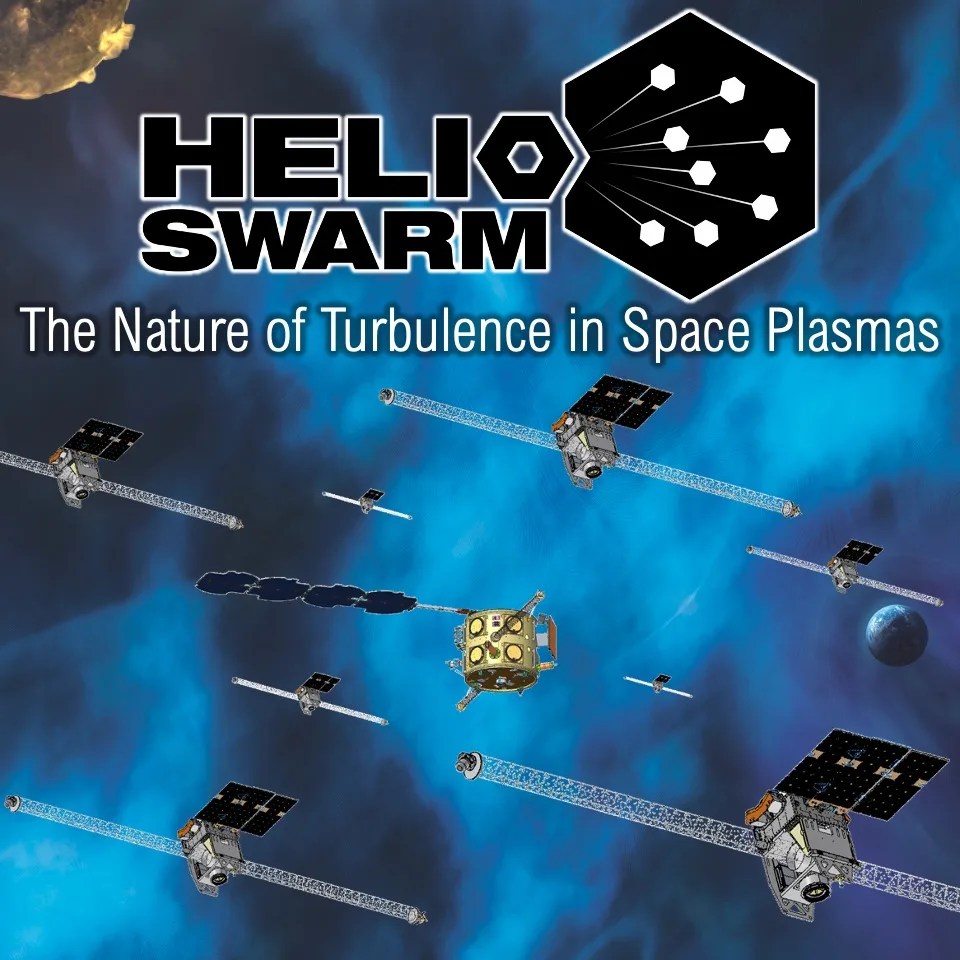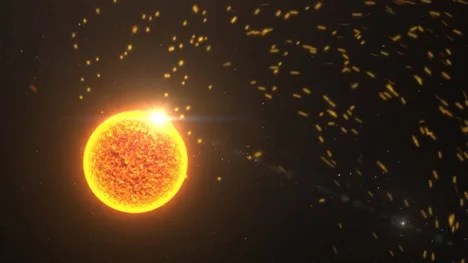HelioSwarm

HelioSwarm mission will help improve our understanding of the dynamics of the Sun, the Sun-Earth connection, and the constantly changing space environment. This mission will provide deeper insights into our universe and offer critical information to help protect astronauts, satellites, and communications signals such as GPS. The mission is a constellation or “swarm” of nine spacecraft that will capture the first multiscale in-space measurements of fluctuations in the magnetic field and motions of the solar wind known as solar wind turbulence.
Studying solar wind turbulence across large areas requires plasma measurements taken simultaneously from different points in space. HelioSwarm consists of one hub spacecraft and eight co-orbiting small satellites that range in distance from each other and the hub spacecraft. The hub spacecraft will maintain radio contact with each small satellite. All radio contact between the swarm and Earth will be conducted through the hub spacecraft and the NASA Deep Space Network of spacecraft communication antennas. HelioSwarm will gather multi-point measurements and reveal the three-dimensional mechanisms that control the physical processes crucial to understanding the dynamics of the Sun, the Sun-Earth connection, and our neighborhood in space.
The HelioSwarm Mission Operations Development Team, which included members from the NASA Ames Intelligent Systems Division, provided essential support leading to the completion of two major Phase A milestones for the HelioSwarm mission concept: the submission of the Phase A Concept Study Report (CSR) in July 2021, and the execution of the Site Visit (SV) in November 2021. The mission’s budget is $250 million, and the mission’s principal investigator is Harlan Spence from the University of New Hampshire. NASA’s Ames Research Center in Silicon Valley, California, will provide project management.



























